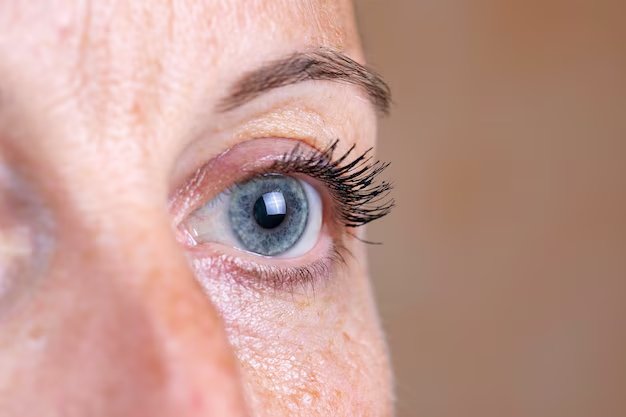Are Cataracts Really Hereditary? Exploring Causes, Risks, and Insights
Cataracts are one of the leading causes of vision impairment worldwide, affecting millions of people each year. While these cloudy formations over the eye's lens are commonly associated with aging, many individuals wonder if they have a hereditary component. This curiosity springs from observing family patterns where multiple members develop cataracts, leading to questions about genetic influence. In this comprehensive guide, we will explore whether cataracts are indeed hereditary, how they develop, and what factors increase the risk of cataract formation.
Understanding Cataracts: What Are They?
Cataracts occur when proteins in the eye's lens clump together, causing clouding that affects vision. Over time, this cloudiness can grow, making it more difficult to see clearly. Cataracts often develop slowly and can affect one or both eyes.
Common Symptoms of Cataracts
- Blurry Vision: A subtle blur that becomes more noticeable over time.
- Glare and Halos: Difficulty seeing at night due to halos around lights.
- Fading Colors: Perceived fading or yellowing of colors.
- Double Vision: Seeing multiple images in one eye.
Cataracts are generally considered a part of the natural aging process, but several factors influence their onset.
Are Cataracts Hereditary?
The question of whether cataracts are hereditary cannot be answered with a simple yes or no. Some types of cataracts indeed have genetic links, particularly congenital cataracts, which are present at birth or develop during childhood. However, the more common age-related cataracts are influenced by a combination of genetic and environmental factors.
Genetic Influences
- Congenital Cataracts: These rare cataracts can be hereditary, often caused by genetic mutations that affect lens development. If a child is born with or develops cataracts early, it’s essential to explore family medical history for insights.
- Age-Related Cataracts: While age-related cataracts have a genetic component, genes only play a partial role. Studies suggest that if parents or siblings had cataracts, there might be a higher risk, but this is not determinative on its own.
Multifactorial Causes
Cataracts often result from a combination of genetic predisposition and lifestyle factors, involving:
- Age: Most common cause due to the natural aging process.
- Medical Conditions: Diseases like diabetes can elevate risk.
- Lifestyle Choices: Smoking and excessive alcohol use contribute.
- Environmental Elements: Prolonged ultraviolet (UV) light exposure is known to increase the likelihood of cataracts.
Risk Factors for Cataracts: Beyond Genetics
While genetics may set the stage for cataract development, numerous risk factors can accelerate their appearance.
Age and Cataracts
- The Aging Lens: As people age, proteins in the lens begin to break down and clump together, forming cataracts.
Lifestyle and Environmental Factors
- Smoking: Increases oxidative stress leading to protein clumping.
- Alcohol Consumption: Regular heavy drinking is linked to eye health decline.
- UV Light Exposure: Wearing sunglasses that block UV rays is crucial.
Health Conditions Contributing to Cataracts
- Diabetes: Poorly controlled blood sugar levels increase cataract risk significantly.
- High Blood Pressure: Can lead to general health and eye-related issues.
Medications and Eye Injuries
- Steroidal Drugs: Long-term use of steroid medications can lead to cataract formation.
- Eye Injuries: Trauma can lead to cataracts, especially if sustained during youth.
Preventative Measures: Reducing Cataract Risk
While some factors like age and genetics are beyond control, many lifestyle choices can help delay or prevent cataracts.
Healthy Lifestyle Choices
- Quit Smoking: Reduces oxidative stress in the eyes.
- Moderate Alcohol: Limit to reduce health risks.
- Nutritious Diet: Incorporate fruits and vegetables rich in antioxidants, such as vitamins C and E.
Protective Eyewear
- Sunglasses: Wear UV-blocking sunglasses to protect from harmful rays.
- Protective Glasses: Use during activities where eye injury could occur.
Regular Eye Exams
Regular eye check-ups can help detect cataracts early. Eye specialists can monitor lens changes and advise on necessary steps to preserve eyesight.
Cataract Treatment Options
When cataracts begin to impair your daily life, treatment options, primarily surgery, should be considered.
Cataract Surgery
- Lens Replacement: The surgery involves removing the cloudy lens and replacing it with a clear artificial intraocular lens (IOL).
- Success Rate: Cataract surgery is commonly performed and usually has high success rates in restoring clear vision.
Non-Surgical Approaches
Initially, changes in eyewear prescriptions and the use of brighter lighting can manage symptoms.
Takeaways: Comprehensive Summary
Here’s a concise summary to help guide your understanding of cataracts and how to manage risk:
- 👥 Genetics Role: Cataracts can be hereditary, especially congenital types.
- ⏳ Age as a Factor: Most common in older adults due to natural aging.
- 🔥 Lifestyle Choices: Smoking, excessive alcohol, and poor diet increase risk.
- 🌞 UV Protection: Sunglasses that block UV rays help prevent cataract formation.
- 🍎 Healthy Habits: Consume a diet rich in antioxidants to support eye health.
- 👁️ Regular Check-ups: See an eye specialist regularly for early detection and management.
- 💡 Surgery Info: Cataract surgery is effective when vision loss becomes significant.
Incorporating these everyday practices into your life can help support your eye health and potentially delay or prevent cataract development. Remember, while you cannot change your genetics, many lifestyle modifications can significantly impact your eye health trajectory.
Understanding the balance between hereditary elements and lifestyle factors is crucial for maintaining eye health and taking proactive steps concerning cataracts.
